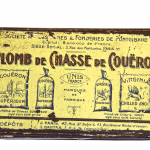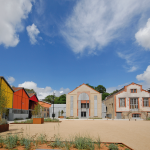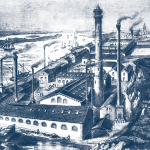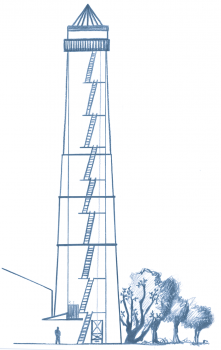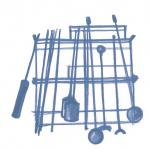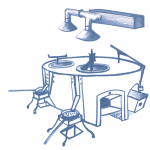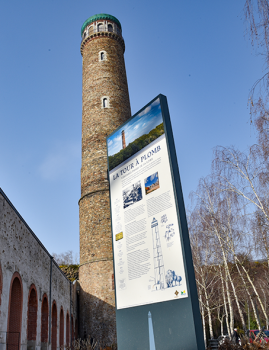The last tower in France built for the manufacture of shotgun pellets, one of the last fifteen that exists in the world, the Couëron Shot Tower was classified Heritage Monument in 1993 as a witness to these once numerous buildings.
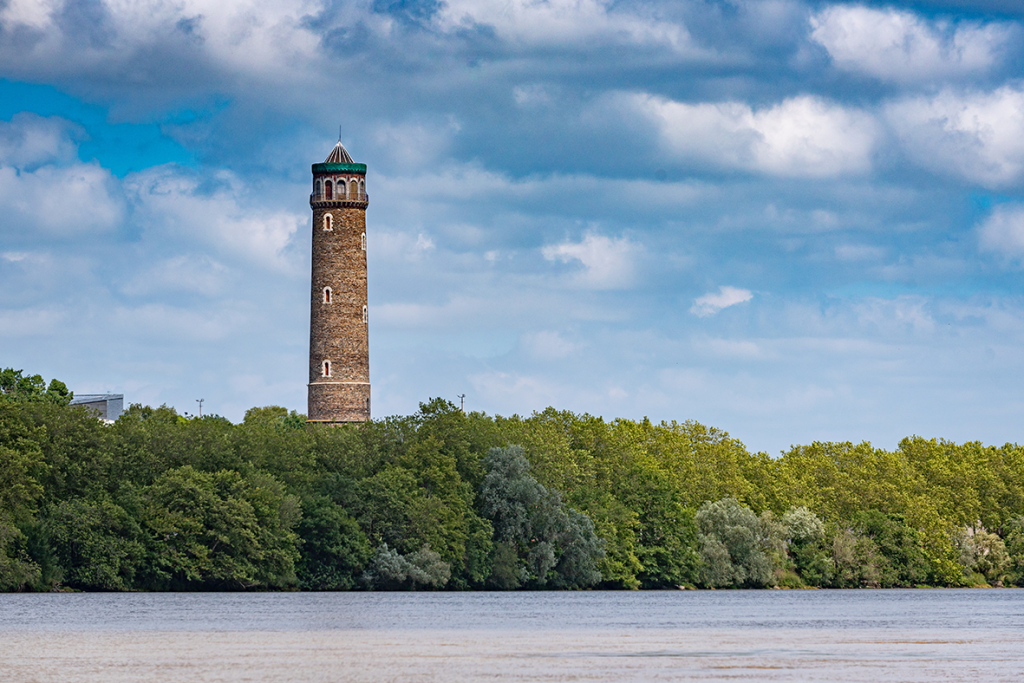
| 1861 | Establishment of the Couëron Foundries and Mills – Les Fonderies et Laminoirs de Couëron |
| 1877 | Construction of the management building “la Fonderie”, the building which became “la médiathèque”, the Shot Tower… |
| 1879 | The foundries merge and adopt the name Pontgibaud |
| 1932 | The plant employs 1200 workers. It is the leading manufacturer of lead in France. The manufacture of shotgun pellets was ceased in 1957. |
| 1975 | Strike and the « Twelve Angry Women » movement |
| 1988 | Definitive closure of the Tréfimétaux plant in Couëron |
| 2009 | Inauguration of the “Espace de la Tour à Plomb”, dedicated to cultural and non-profit activities |
| 2014 | Opening of the Victor-Jara Multimedia Library |
A symbol of success
The attention given to the architecture and the decor shows that the tower should symbolise the success of the Couëron foundries and mills. This plant was created to process lead ore that had been transported along the Loire. It would diversify its production from 1877 onwards by developing finished lead-based or copper-based goods (white lead, minium, shotgun pellets… sheets, cables and wires).
Remarkable architecture
Built between 1875 and 1877 by the Nantes architect Léon Lenoir and the Lemut and Guerin Company, the Couëron Shot Tower copies, and is taller than, its Nantes’ twin, the Launay Tower (56m), with its height of 69.4m and a base diameter of 11.3m. The slender shaft shows a subtle decor: gneiss rubble stone masonry, the rock extracted from the quarry in which the plant established itself, presenting regularly interspersed limestone windows.
The upper part of the tower was subject to a richly decorated vision: a limestone walking gallery girdled by wrought-iron railings, eight semi-circular arches crowned in brick, crenellated coping, and zinc roofing.
The interior of the tower is almost empty. A series of 9 ladders, punctuated by landings, gives access to the upper chamber.
The manufacture of shotgun pelletsShot towers made their appearance in 18th century France for the manufacture of pellets or lead shot. A mixture of lead, arsenic (for malleability), and antimony (for hardness) is prepared in the lower chamber. The ingots thus obtained are taken up to the casting chamber where the necessary manufacturing equipment can be found: furnaces with their fume hoods, used to re-melt the lead, 21 perforated lead-shot pans stored in a rack, dippers, shovels, buckets, burettes… Dropping the balls of lead from a great height leads to perfectly spherical balls forming, which are collected in two water-filled basins placed on the lower level. The pellets manufactured in Couëron were well-known for their high quality. In the tower, as in the rest of the plant, the workers labour in difficult conditions, due mainly to the harmfulness of lead.
|
Discover the history and the heritage of Couëron
Walking guides are available at the town hall and the town’s cultural venues
Digital treasure hunts to discover Couëron’s heritage are available as free downloads from baludik.fr

